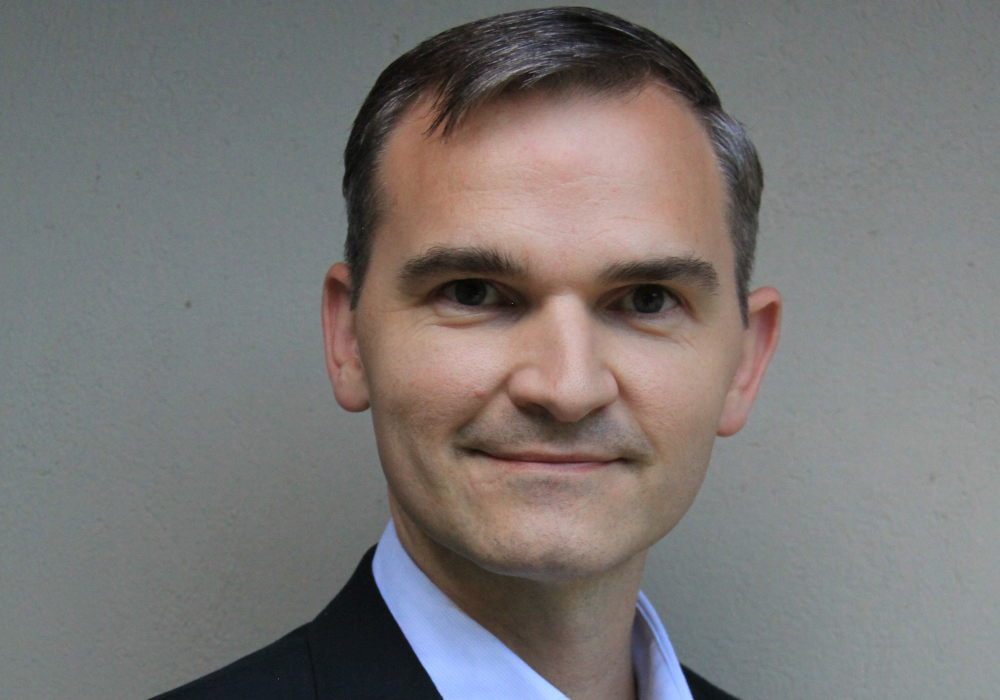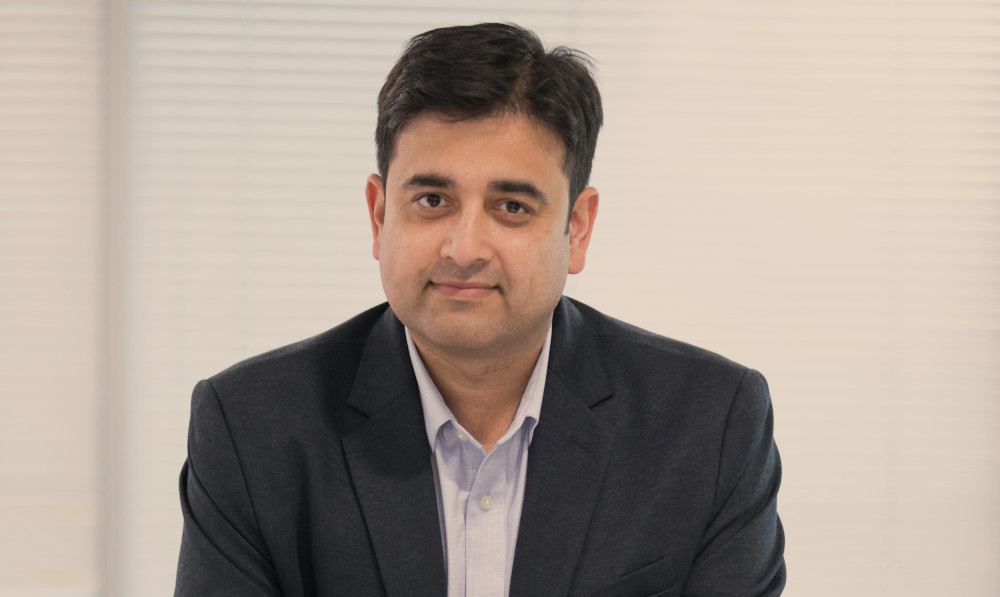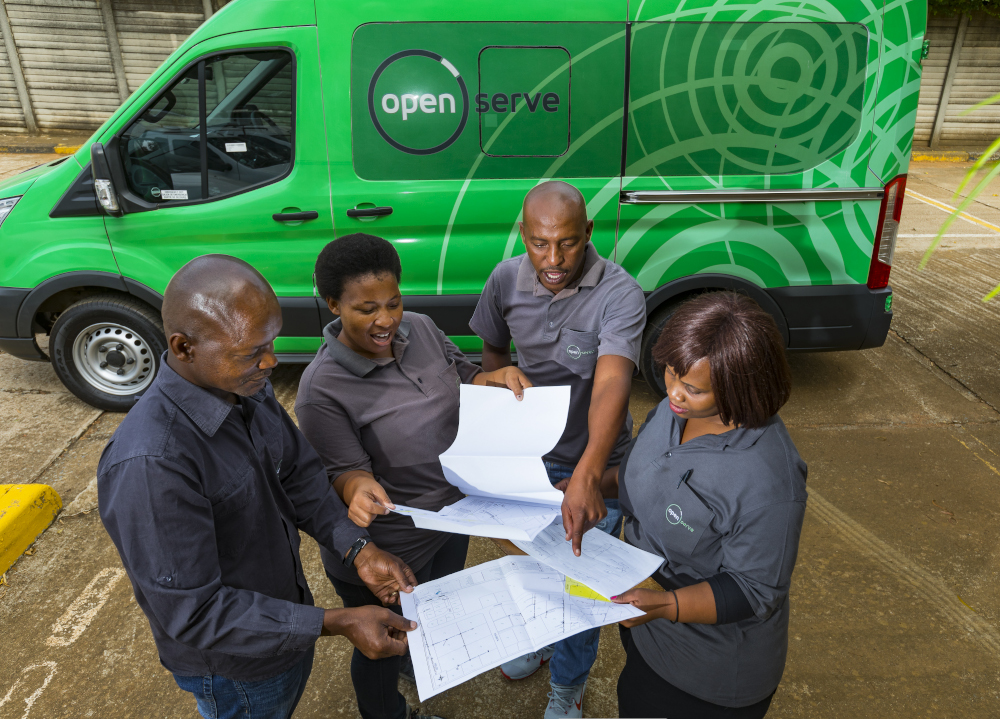Once a luxury, connectivity has become the fourth utility. Featuring alongside electricity, water and sewerage as services that are vital to economic and social development, connectivity is the key to participating in our connected, digital world.
At a very basic level, this connectivity needn’t necessarily enable the most high-tech or advanced technologies to have an impact, notes Mark Walker, Associate Vice-President for south, east and west Africa at the IDC (International Data Corporation). Today, your humble one-man band can promote his business, engage with customers and transact using a simple smartphone and an internet connection. Issues arise and gaps appear when access is limited, when quality is poor, when costs are prohibitive, when security is questionable and when connections are unreliable. So how do we minimise these inhibitors?
 Zoltan Miklos, General Manager for Network Planning at MTN
Zoltan Miklos, General Manager for Network Planning at MTN
For many, it has to start with infrastructure rollouts and the distribution of spectrum. But the high costs associated with deploying key network infrastructure and delays in government’s allocation of spectrum mean that some can access the plumbing that enables connectivity and some cannot.
But infrastructure is only one piece of the puzzle, asserts Zoltan Miklos, General Manager for Network Planning at MTN: “5G is enabled in various parts of the mobile network, from the radio access network through to the mobile core network. So it’s a multi-layered conversation. The network starts on the handset. If you don’t have the right handset, you won’t be able to use the network or the features that have been deployed.” For Miklos, making sure that people have access to the most efficient technologies — and that they know how to use them — is a major step in the right direction when it comes to bridging digital divides.
Is 5G the answer?
SAP Africa’s telco industry Value Advisor, Samantha Naidoo, describes the rollout of 5G across South Africa’s urban centres as one of the most significant technology events of 2021. According to Naidoo, 5G is the foundation upon which many of the technologies and innovations of the future will be built. But can it alleviate our connectivity woes and improve digital inclusion?
“5G is important because it maximises the use of available spectrum and provides greater volume of connectivity to a wider audience,” says Walker. The amount of data we’re currently generating as individuals and industry is growing exponentially. Currently, networks lack the capacity to deal with all of this information, which is why 5G is so valuable. But this doesn’t mean that it’s a silver bullet, he says. Physical constraints and high costs mean that there is still a long way to go before 5G can make a real impact.
 Nicholas Naidu, Managing Executive for Technology Strategy, Architecture and Assurance at the Vodacom Group
Nicholas Naidu, Managing Executive for Technology Strategy, Architecture and Assurance at the Vodacom Group
Miklos agrees. 5G will only become a big economic enabler once there is enough spectrum to enable the higher data capacities and lower latencies. “5G holds massive potential, but it won’t solve some of the fundamental issues that are currently preventing people from accessing 4G, as an example.”
But this immaturity shouldn’t hinder 5G investment, says Managing Executive for Technology Strategy, Architecture and Assurance at the Vodacom Group, Nicholas Naidu. 5G will provide the connectivity needed for us to make the most of some really exciting, and really disruptive, technologies, he explains. Now is the perfect time to accelerate our 5G deployments so that we can remain competitive with the rest of the world.
Enabling industries
With ubiquitous connectivity, the public services needed to support smart cities will be digitised, enabling everything from predictive maintenance to improved traffic management. Doctors will perform surgeries without having to be in the same room as their patients and the manufacturing industry will use connected devices to automate repetitive tasks and make their operations more efficient.
According to Barbara Mallinson, the Founder and Chief Executive of Obami — a digital learning solutions company that creates cloud-based learning solutions for organisations and schools— high-speed, reliable connectivity can also transform education. Connected technologies present us with an incredible opportunity to take learning beyond the confines of the classroom, she says, something we’ve seen happen with varying degrees of success during strict coronavirus lockdown restrictions. “I feel like Covid-19, despite all of the awfulness it has caused, does have a sliver of a silver lining to it. It put the gaps of our education system in clear focus and highlighted what needs to change within the sector.”
Things aren’t all doom and gloom, she believes. Today, more people are connected to the internet, data costs have come down and there is a global understanding that e-learning is critical; it’s here to stay and it will have a real, marked impact. Just look at Sisanda Tech, which uses digital technologies and augmented reality (AR) to deploy virtual science labs to schools that lack access to expensive scientific equipment for experiments. Using Sisanda’s smart solutions and a smartphone or tablet, students can enjoy more hands-on learning experiences such as conducting experiments, dissecting human organs or exploring the surface of Mars.
From a retail perspective, network issues and poor accessibility often prevent individuals and small, medium and micro businesses from effectively leveraging formal banking solutions, explains Murray Gardiner, Managing Director of Bluecode Africa. Seamless and reliable connectivity empowers consumers to pay in a simple and consistent way and enables merchants to reap the benefits of digital by providing access to more affordable financial services.
According to the GSMA (Global System for Mobile Communications Association), there are 3.8-billion mobile internet subscribers globally, representing 49% of the world’s population. However, adoption is not equitable. At the end of 2019, mobile internet adoption stood at 26% in sub-Saharan Africa, where almost half of the population is not covered by a mobile broadband network.
“We need to think outside of the box when it comes to connecting those who aren’t connected, and who are excluded from participating in digital economies,” concludes Naidu. “This requires two things — that telcos build networks to enable widespread coverage and connectivity, and that manufacturers develop more feature-rich yet affordable smart devices. Studies show that increasing broadband penetration boosts GDP growth. As such, expanding accessibility and connectivity can translate into real economic value.”
Connectivity 2.0?
While spectrum is in short supply, and the cost of rolling out infrastructure is high, there is plenty of room for smart alternatives. From TV white space technology and satellite internet to internet-connected balloons (a Google project that has recently been scrapped), some of the tech industry’s big brands are currently spending a lot of money and time on researching new and innovative ways to connect consumers who live in areas that are difficult to reach. While these endeavours are exciting, their success and viability are yet to be demonstrated.
A question of control
When vast divides in access exist, it’s important to take a critical look at who is in control, notes Mark Walker, Associate Vice-President for sub-Saharan Africa at the IDC (Industrial Development Corporation of South Africa). For example, in the run-up to their 2021 elections, the Ugandan government opted to restrict internet access in a move that it claims was intended to minimise disruptions and maintain security. And they’re not the first to do so. Similarly, Twitter recently took the decision to permanently suspend the account of former US president Donald Trump after he repeatedly violated the platform’s rules. While perceptions about the two situations may differ, in both instances there are corporations and institutions dictating who gets to speak and who doesn’t, comments Walker, adding that this kind of censorship should always be a cause for concern. — Joanne Carew
Fostering connection during Covid-19
It’s hard to imagine what we’d do without the internet. This modern cliché has proved especially true throughout the Covid-19 pandemic, as people around the world have been able to use their internet connections to remain entertained, informed, and productive. This once-unimaginable, now-ubiquitous technology has been instrumental in creating a more connected world, and no-one knows that better than Openserve: South Africa’s largest telecommunications infrastructure provider.
 Openserve’s Chief Digital & Strategy Officer Pushkar Gokhale
Openserve’s Chief Digital & Strategy Officer Pushkar Gokhale
“With the advent of Covid-19, we’ve been given a peek into what the future holds,” says Openserve Chief Digital & Strategy Officer, Pushkar Gokhale. “A lot of our emotional and social needs are being fulfilled through digital connections. This is especially true as the world adopts and adapts to online platforms.”
The explosive popularity of apps such as Zoom and the steady growth of social media platforms, both of which have become important tools for businesses, attest to this. With real interactions out of the question, people quickly shifted to seeking connection online, while companies were forced to rapidly adapt to remote working. This resulted in a massive increase in the demand for fast, reliable internet.
Gokhale explains that, in response to pressure to maintain the pace, Openserve has been focusing on three strategic priorities: “Firstly, aggressively expanding our fibre footprint across South Africa. It’s aligned with the increased need for stable and reliable connectivity. While doing this, we’re making the homes we pass fibre-ready, making it easier and faster for consumers to connect to the internet when they order directly from ISPs.” Initiatives like these not only improve the ease of access for the elderly but also provide a foundation for the creation of future online businesses and connected homes.
“I think the second priority is to continue to provide newer products and propositions to markets, which includes improved speeds and better value propositions,” Gokhale continues. “Lastly, throughout this pandemic the importance of customer experience has once again come to the fore. We are focusing on providing customers with the ability to access self-service capabilities and interact with Openserve directly through our digital channels. Openserve truly believes that connection and the ability to digitally interact are two imperatives that will drive the future of customer experience and growth.” This belief in customer service as a key pillar of their business led Openserve to create an innovative support platform.
The Openserve Connect app is a step forward in this regard, and Gokhale is excited about what it brings to the table. “This is something very close to my heart and I must say it’s sort of the first of its kind across fixed broadband network providers,” he tells us. “Essentially the app puts self-service capabilities in the hands of the customer and it allows the potential for existing customers to engage with Openserve directly. You can check your coverage, explore Openserve broadband network services, and test your connection. A customer sitting in their home can check the network line and see if it’s up or down, as well as check the WiFi speed.”
This level of transparency seems to be a key part of Openserve’s strategy. “I think one of the key things we’ve recently added is notifying the customers proactively about any network outages. In the coming weeks we’ll also introduce the capability for customers to track the progress of their orders and also stay updated in terms of any faults, as well as when technicians are coming out.”
The app provides an easily accessible digital channel for both potential and existing customers, and Gokhale says we’re likely to see similar innovations coming from Openserve in the future.
The company is also enhancing its fibre portfolio, offering improved speeds to match the demand for fast connections. “As soon as the pandemic hit, it reiterated how important connectivity is,” Gokhale says. “Of course, we’ve always been very confident about the value it brings to the customer, it was just made even more apparent by the pandemic.”
Connections that were mostly used for video streaming and social media were now being burdened with live video calls, either for business meetings or familial events, which uses significantly more bandwidth. With the shift not happening in a handful of homes but in thousands, there was a need for an updated offering from companies such as Openserve.
“We doubled our speeds and we also introduced symmetrical speeds on our fibre portfolio, which included discounted or free installations,” Gokhale says.
Openserve is not planning to stop there. “Across March and April this year, we’ll introduce further speed upgrades, as well as price changes on our broadband suite of products,” he continues. Gokhale emphasised that these are essentially “focused on ensuring that it’s easier for customers to connect and that there are no costs that are directly linked to the value propositions for our partners. Thereby, we’re incentivising our partners and their customers to upgrade to higher speeds and better packages”.
Even before the pandemic, it was evident that the world was becoming more digitally reliant. Covid-19 only accelerated a process that was already in motion. However, this technological leap forward might also serve as an economic lever wherein those unable to afford high speed internet at home are left behind, unable to access the digital economy. But Gokhale remains optimistic: “At Openserve, we’re working really hard to ensure that we aggressively roll out fibre not just in metros, but also in underserved areas and smaller cities. We want to make sure that high-speed broadband is available to as many South Africans.”
As for the rise of burgeoning digital economies, he says: “More and more businesses are looking at permanently shifting to remote working or a hub-and-spoke model. What we’ve seen is that many customers are realising the importance of the stability and high data usage opportunities that a fixed connection provides, putting Openserve in a good position.”
 Openserve connects businesses and consumers to create solutions that matter
Openserve connects businesses and consumers to create solutions that matter
Schools and surrounding residential areas are also a priority, with 21st century skills becoming a necessity for the modern learner. More than just a means to work and study, the past year has shown how the internet is shaping our means of communication with our families, helping us share our most special moments even when we’re far apart. Connectivity has become something much more important than one’s ability to stream their favourite series or send some emails from home: it’s now enabling people to keep themselves social and sane in one of the most trying times in recent memory.
Being the largest fixed broadband provider in South Africa, Openserve is constantly striving to improve each customer’s experience, as exemplified by their Connect app and the unprecedented degree of control that it will provide to new and existing users.
As Openserve continues to expand its fibre footprint, more South Africans will be able to move from mobile data to fixed connections, saving them massive amounts of money and creating a more digitally equitable country for all. The pandemic will be over eventually, but it’s unlikely that we’ll change direction from the increasingly digital bearing we’re on. Openserve is there to guide the way, charting a course into the future.